The central medallion in eglomisé under glass represents a putto leaning on an antique column, an allegory of languishing love.
This technique of eglomisé under glass consists of fixing under the glass, previously enhanced with the desired pattern, a gold leaf highlighting the design. This technique takes its name from Jean Baptiste Glomy, merchant haberdashery, designer and engraver of the 18th century, although this technique has been used since antiquity.
The edge of the glass is cut to form a frieze catching the light.
An iridescent mother-of-pearl plate forms the background of the composition.
The hinged opening frame is in 18k gold, as are the chains that hold it. The two side chains are in jaseron mesh textured with a honeycomb pattern.
These romantic or "sentimental" jewels were fashionable at the beginning of the 19th century, under the Empire. They combined a symbol of love drawn from antiquity and great delicacy in the shape and meticulousness of the jewel. A lock of hair from the loved one was sometimes slipped on the back of the jewel.
The ring joining the three chains is hallmarked:
. Rooster's head turned to the left: small gold guarantee hallmark with garnish for Paris between 1809 and 1819.
Magnificent romantic jewel from the Empire period with a superb composition, very finely made, in églomisée.
3.7 x 3.2 cm, excluding chain
6 cm high with chains
0.5 cm thick
9 grams gross
Superb condition. One link of the central chain replaced, very discreet if not almost invisible. The fixed under glass is almost like new, which is rare for such a fragile technique.
Hand delivery in Paris or insured Colissimo delivery.
France: €15
Europe: €20
World: €35


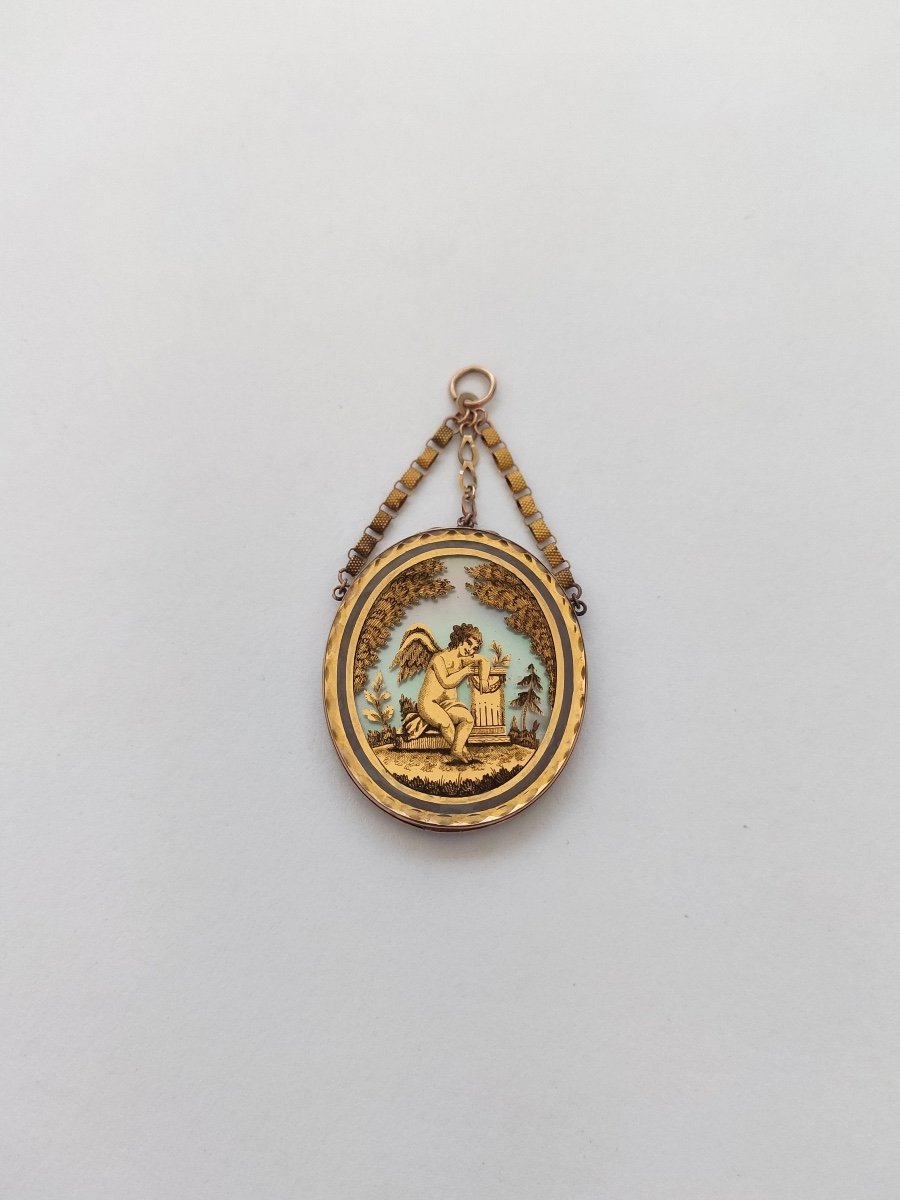

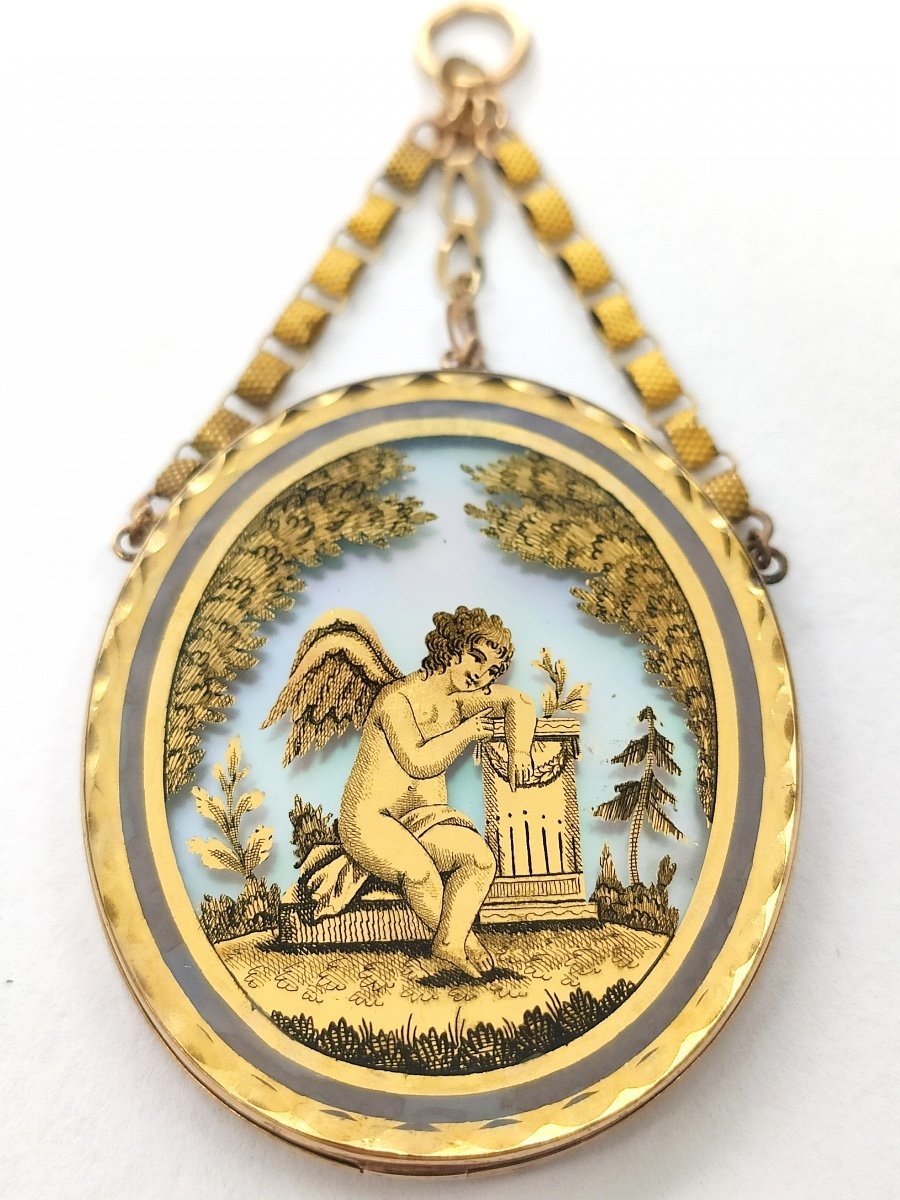

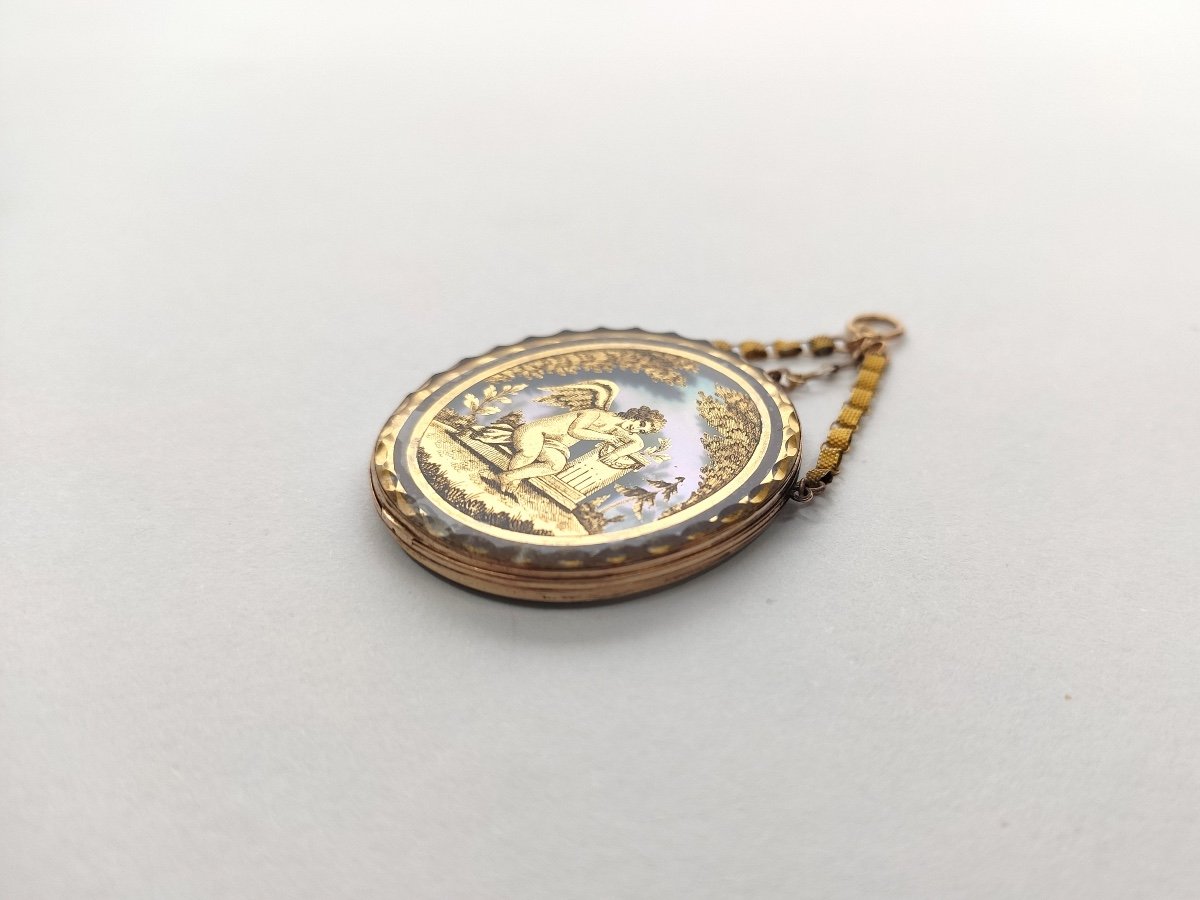
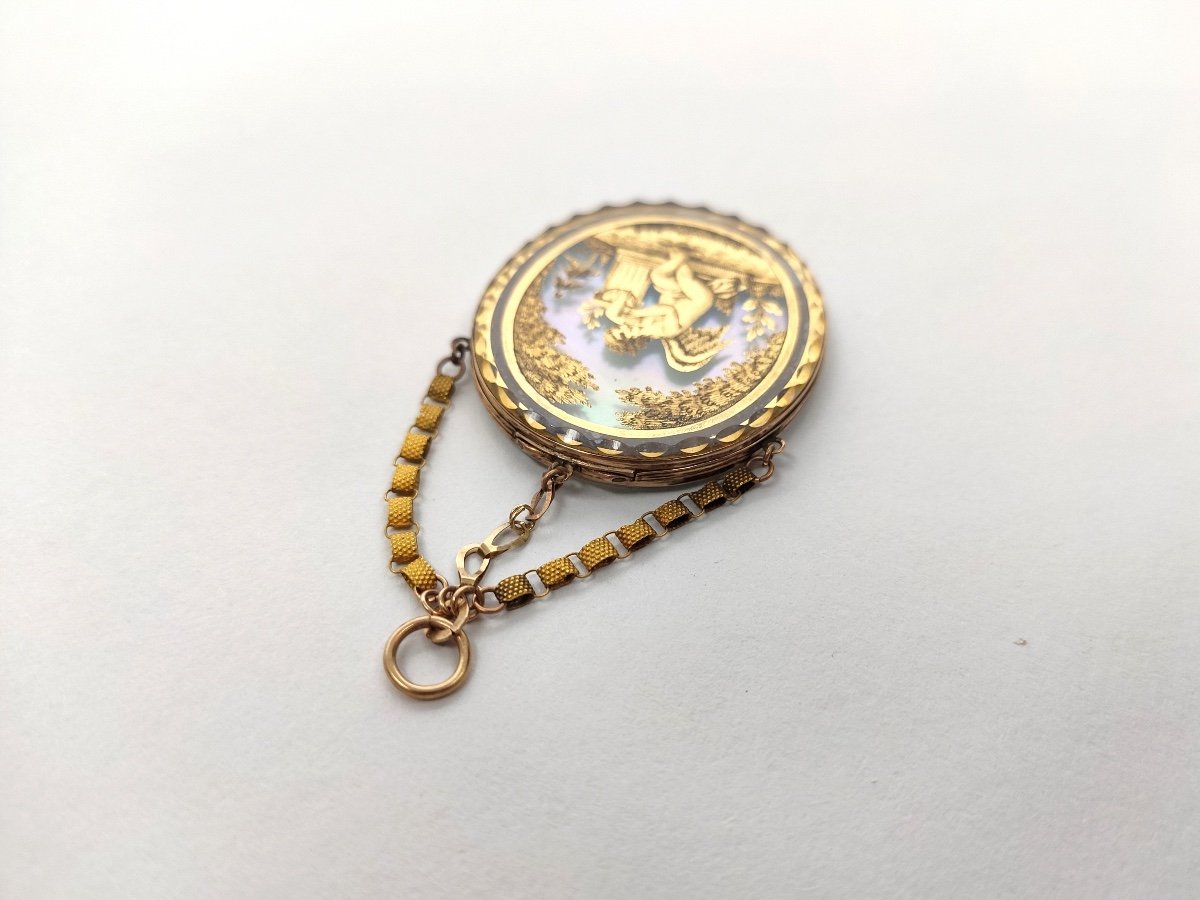
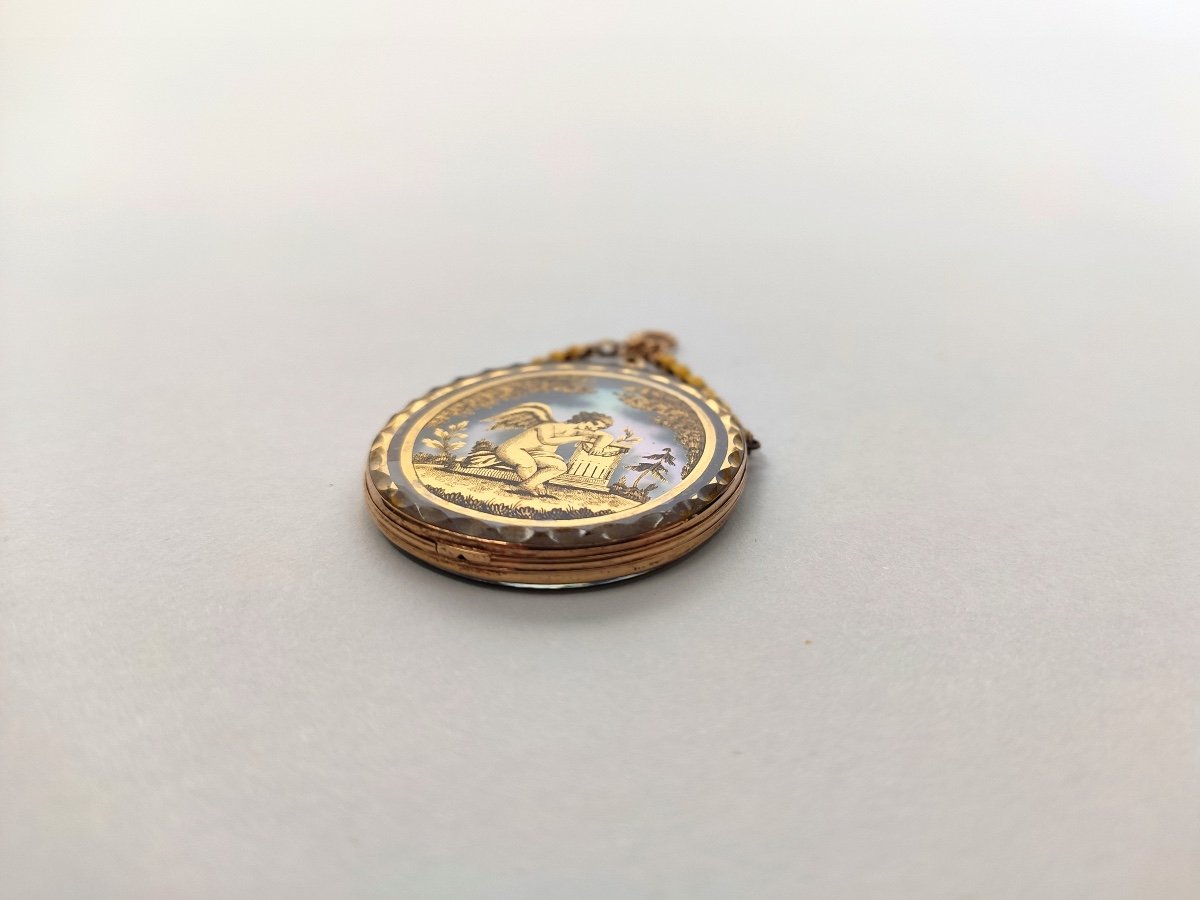





























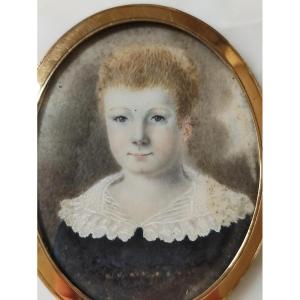
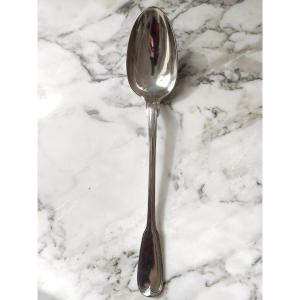


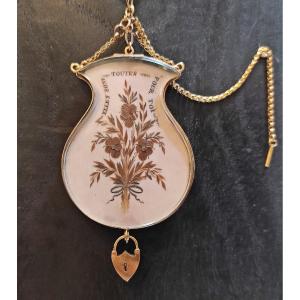



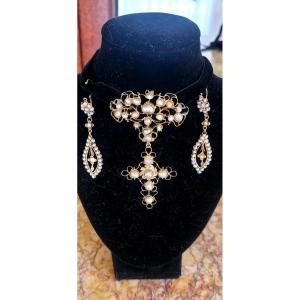



 Le Magazine de PROANTIC
Le Magazine de PROANTIC TRÉSORS Magazine
TRÉSORS Magazine Rivista Artiquariato
Rivista Artiquariato